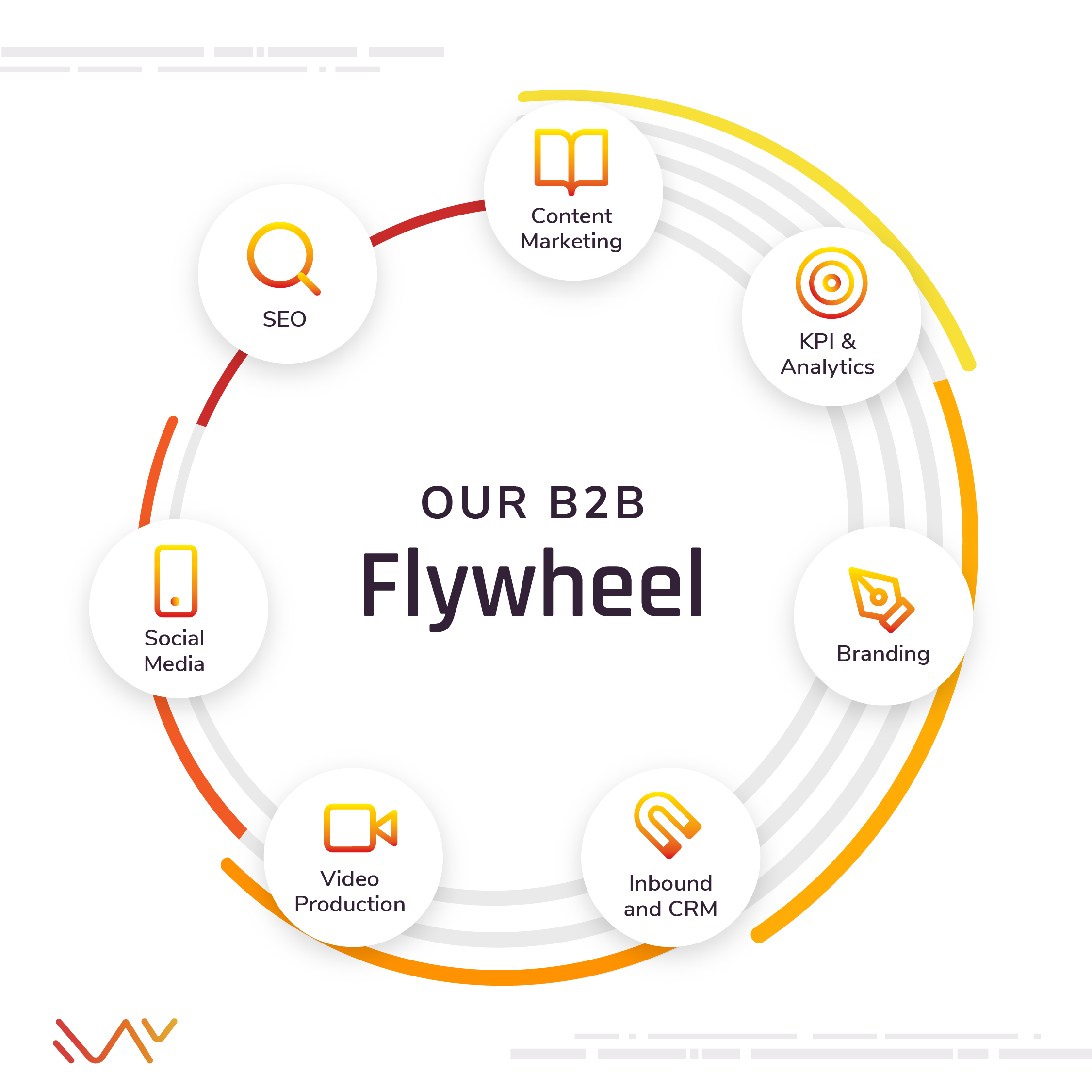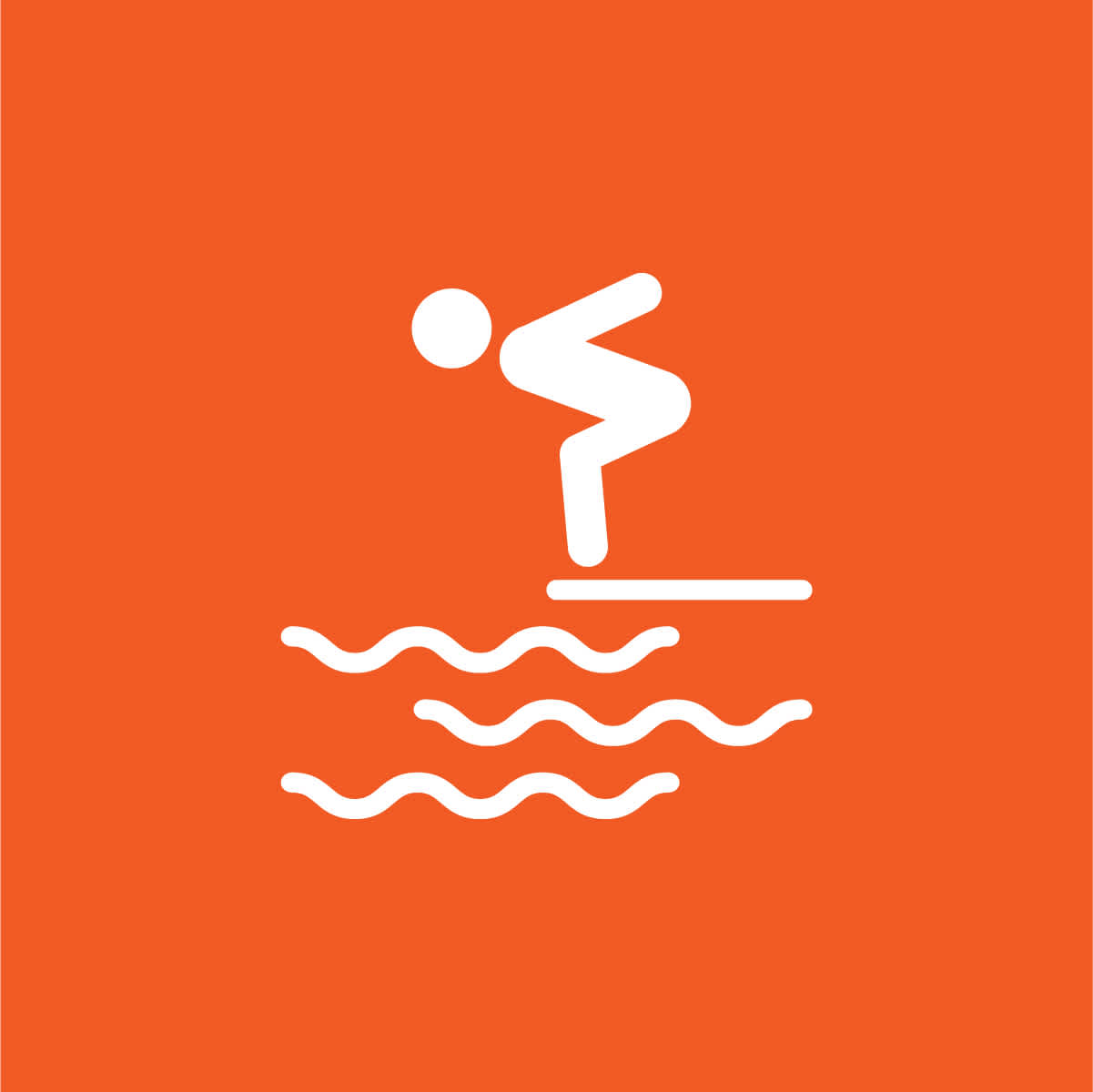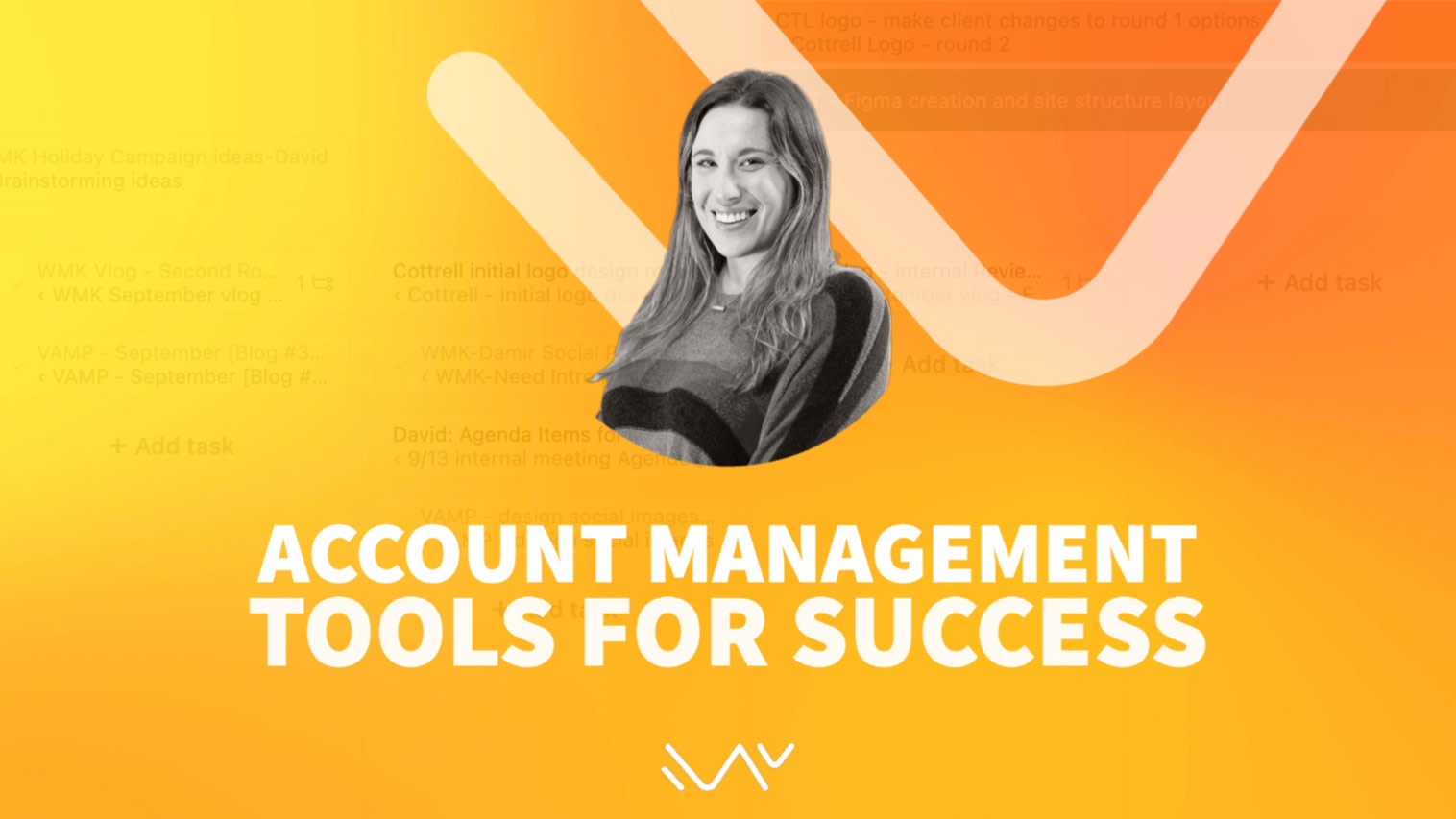//
Sep 21, 2022
Watermark Water Cooler | Account Management Tools for Success
You can't build a house with a paintbrush. You can't flip an egg with a fork. And you can't manage your marketing and sales strategies without the proper tools.
In this month's Watercooler, our Account Lead, Callie, shares the essential tools that keep our clients' (and Watermark's) marketing strategies running smoothly. Check it out!
Cameron: Callie, welcome to the Watermark Water Cooler.
Callie: Thank you.
Cameron: How are you doing today?
Callie: I'm doing well. Thanks.
Cameron: Awesome. Thanks for coming along with us today. Can you just tell us a little bit about yourself, and what you do here at Watermark? I mean, we know you're account coordinator, so that's, that's the, I'll start that off, but yeah. Tell us a little bit about yourself.
Callie: So basically I'm just the liaison between the client needs and relaying that back to the internal team to make sure. Projects are met on time and within budget. And any client requests are being taken care of. You're giving yourself too little credit, but anyway, it was a general overview.
Cameron: Yeah. Yeah. So we're here to talk a little bit about how what tools we use in our process. and I think it's a huge part of what makes things move through Watermark successfully for our clients. And there's like, there's a ton of parts right here that we, that we use, but we also are, you know, there are so many things we're covering with different types of projects as we're a and a full-service agency by that so we could be doing a video project.
Callie: We could be doing a print project, there are web projects. There's all this stuff that we do. But, at the root of that, we have these tools that we have to use to make sure that the team is moving forward. Callie's gonna talk to us a little bit about that today. One of the things also that I think is so important about this is, you know, in the flywheel there's like that bottom part of the flywheel, which is like, Hey, are we making our customers super happy with the customer?
And so I think part of these tools help that, you know, piece of the bottom part of the flywheel to bring 'em back around yeah. To continue to work with us. Right. Yeah, absolutely. Okay. So tell me some of the tools we use to manage projects. Yeah. So I am always here at Watermark, obviously, you know, we use Asana, which is a project management software.
Callie: Allows us to create timelines. And it's a hub for communication and creating tasks for the internal workflows. So that allows us to, from a bird's eye view and getting really into the details, follow the progression of individual projects and make sure that nothing falls through the cracks.
Callie: It also allows us to track budgets in harvest, which is another software that we use. And it's nice because these days you can integrate all those third party apps together. So we have harvest integrated with Asana. So everything's kind of talking to each other. And there's not any, there's a seamlessness to it.
Okay, call you just talked to us a little bit about Asana and how that's part of the process. You know what, tell us about how the nitty gritty of like getting a job set up so that the team knows how to work. To the final goal of the, you know, whatever that is we're trying to get to. Yeah. So based on the type of project, like you mentioned before, whether it's a video project or a web project or a print project, we have different templates set up in Asana.
So we would use the appropriate template to set up the project for that job. And then within there, there are specific boards. So. Like the web board would have I don't know, developer-specific sections in it. And then within each of those boards, you can create tasks. So that's where we would put client requests into the task.
Callie: We give the details. So the team knows what's going on. We have estimated hours. Yeah. The brief is in there. There's all kinds of stuff. Yeah. I think another thing that's like so important about these boards is they kind of follow like our process for depending on again, the job. So for like a web project, it's got everything from the site map all the way down to the development side of things.
So the boards kind of guide the team and the account lead of like, what's next. In the process it's supposed to happen? Yeah, it's definitely in a chronological state. Yeah. Because it also helps us build timelines. So within Asana, you can view your project by the board view, the list view a calendar view.
Callie: So when you look at the calendar, as long as you have all your tasks set, Appropriately. And you've thoroughly put in all the information and deadlines, you should be able to click on the calendar view and see a nice timeline. That makes sense for the project. It sets up, I mean, really these tools set guardrails.
Yeah. To kind of guide the team. Obviously the person behind those, those guardrail setting inside the tools is very important as. But you know, how do they, you know, these guardrails that get set up, you know, how does that help a designer or a developer with these tools kind of know the path to kind of go down.
Callie: Yeah. So it's nice because when you have a specific task set up for, let's say design component of a project, you're able to have communication within just that task. So if the designer has a question. About some, something they need clarification on for that specific aspect. You can talk to each other within that task and then tracks all of the conversations that have happened.
Yeah, I mean, the, I, I think there's also timelines set up like a time stamp. So it's like how much time do you have to work on it? What are the due dates? All these things are. Part of the guardrails that are so excited there. Yeah. One thing that we haven't really talked about, which I think is another part of our tool set is like the Google atmosphere.
You know, we use almost all of the Google from chat to docs to yeah. Drive. We use all those things as well. And I think that's an important piece of how we work. Yeah. And like I was saying, the third party integrations between. Software these days is so nice. So actually you can integrate Asana into pretty much all of the Google suite.
Callie: So it's in, it's integrated in chat. You can attach, drive documents to it. So Callie we started using this tool called fireflies tell the audience about that. Yeah, it's really. Really gonna be a game changer from a documentation of meetings. So basically it tracks and transcribes all of your calendar meetings, which you can connect it to Google.
Callie: So as soon as I join a Google meet, Fred is their person, Fred from fireflies joins my meeting. And it records if there's video to that, it records the screen. It records all of the audio transcribes it. And then after the meeting has ended, it processes, everything gives you an executive summary of what the overall.
Points that were made in the meeting. Yeah. You can also talk to Fred, I just found out in the meeting. So like, if you have a discussion that you want to make sure to make note of, you can say Fred highlight that and he'll make sure to put that in there. Yeah. I just found that out so you can. Give commands to Fred during the meeting, if you want specific things cool.
Callie: Noted or tracked. And so, yeah, then after you can have that shared with either if you want it with just the participants of the meeting or if you want it with your entire organization, but it gives you a sense of what the overall. Agenda was for the meeting, but then if you really need to know the specifics, you can sit there and press play and yeah.
Callie: Re-listen and watch the entire meeting. So it's definitely a valuable tool to be using now and saves us time on the account side of, you know, taking the minutes of the meeting. Yeah. As we know everybody hears things slightly different. Yeah. When they're translating right. Words into written. Yes. You know, there's been several times, I know, after a meeting, I'm like, well, I wrote this down and another person said, I wrote that down.
I'm like, well, Yeah, who was right. We don't know. So it is nice now it's like, because we all have the, we all have Fred's notes. Right? I think the other thing that's really cool about it is it kind of tells you like how many tasks were assigned inside of it. Yeah. It tells you the sentiment of the meeting like positive, neutral, and negative is searchable.
Like you could search, Hey I'm I wanna know every time somebody said SEO in this conversation, and I want to go highlight that and see where it is. What was talked about. So there are keywords, like, based on how many times they were said in the meeting. Yeah. You can link a sauna to it. So you can, you can task straight out of fireflies.
Yeah. So there's, there are all kinds of cool things that that is happening in AI by the way. Yes. And it is you know, it's exciting to see what we can do with AI to save us time on the accounting side. Yeah. And as a company, so we're continuing to, learn new. Software that's out there in the AI world.
Callie: Yeah. It's definitely helping with time efficiency and team collaboration and communication. Yeah. As long as you have the time and put in the effort to learn the functionality of these apps and all the new software. Yeah. If you learn that at the beginning, then just smooth sailing. Yeah. We, we could, we could probably do a whole episode just on.
Implementation for a new team or employee engagement with some of this stuff. And how do you like to educate people to like, yeah? There's always, you got there's definitely. You got a range. Yeah. You got a range of people too. You usually in an office it's like, there's. You know, Sally or George that hates technology and those people aren't gonna be like late adopters is gonna be harder to teach 'em.
But like I said, that's, we could do a whole another episode just on the adoption of technology. Yeah. And there's, like I said, definitely aligned to where, because there are so many. Different options out there. There's a point where you've implemented too many different options and technologies where it's just causing chaos.
Cameron: Yeah. So finding your core few of software. Yeah. Is definitely good. Well, Callie, I will say this as we kind of wrap up here is that . I think that's what the account team is. So. You know, important in our, in what we do. And also these technologies and software that we use help with that delight phase.

Cameron: So the that's how we get those people to come back around. Callie's a big part of that for our company in making sure that our, our clients are happy.
Cameron: Thanks so much for being on this episode with us call as always, if you would like the channel any content that you want us to produce, we love your comments.
If there's any software that you use as a company -, we would love to continue the conversation after this episode.
Until next time, see you later.
Dive into Inbound marketing with Watermark

As a in Denver, we strive to captivate your audience and elevate your brand through Smart Design and Creative Solutions. We believe marketing is a collaborative effort, achieved by practicing agility and working cohesively with your team, not for it. Using data-driven solutions, we implement the best practices necessary to help your business exceed KPIs.
today to set up a discovery workshop.







